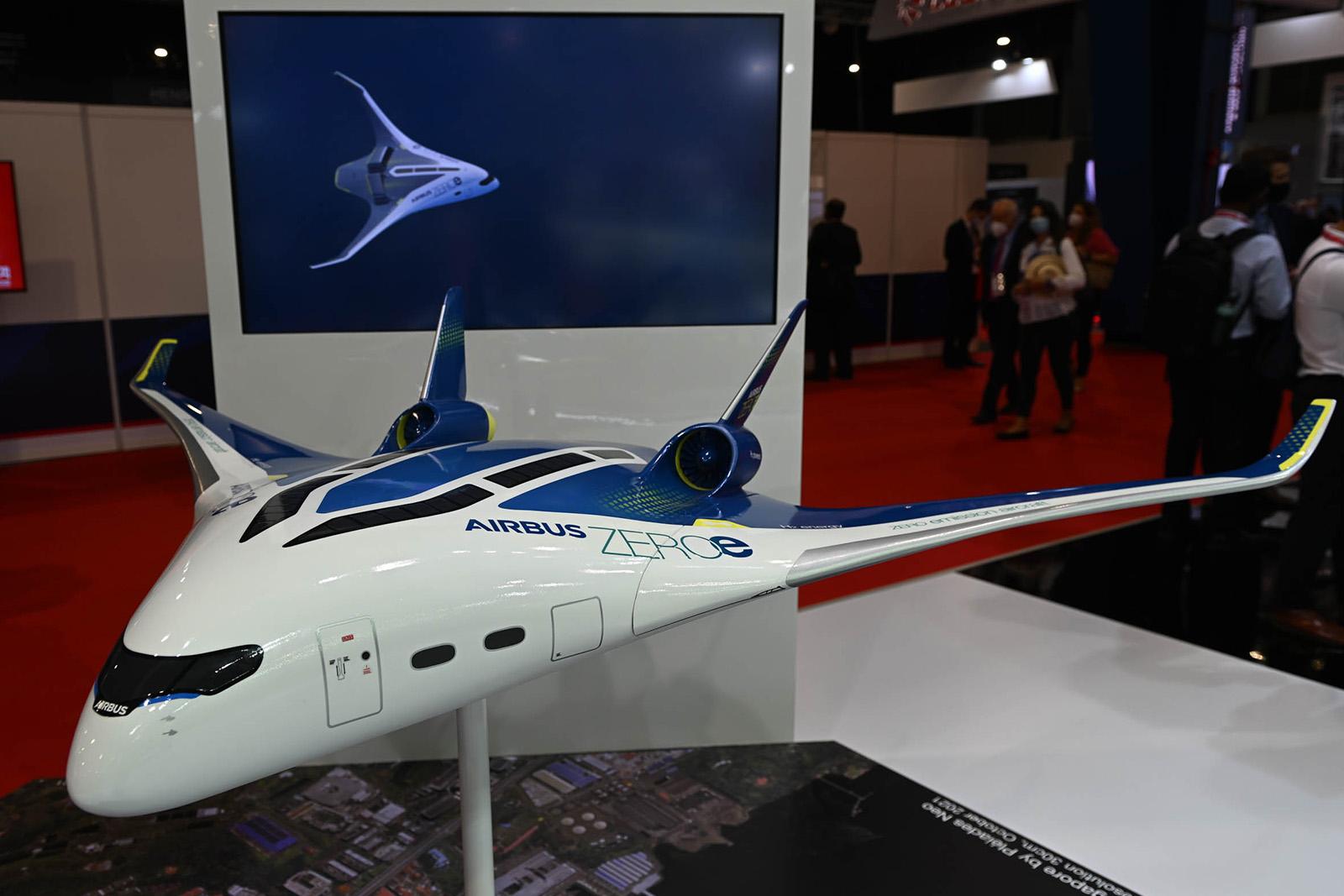
SINGAPORE—As Airbus closes in on a decision about which technologies to pursue for its next-generation carbon-neutral airliner plan, the manufacturer has provided more details about the zero-emissions “ZEROe” blended wing body concept first revealed at the Singapore Airshow in 2020.
The blended wing body (BWB) was one of three potential hydrogen-fueled ZEROe concepts outlined later that year when the OEM unveiled ambitious plans to develop the world’s first zero-emissions commercial aircraft for entry into service (EIS) by 2035. The other study concepts—a turboprop and a turbofan-powered airliner—are based on more conventional tube-and-wing configurations.
While all three depend on hydrogen as the primary power source, the different concepts are intended to explore various propulsion, aerodynamic and structural approaches to achieve the zero-emissions midterm EIS target. The 120-200-seat turbofan is configured with hydrogen-burning gas turbines, while the turboprop—seating up to 100 passengers—also is equipped with engines modified to directly combust liquid hydrogen.
The BWB displayed on the Airbus stand at this week's 2022 Singapore Airshow is closer to the original twin-engine configuration shown at Singapore 2020 than the subsequent version unveiled as part of the ZEROe announcement later that year in September. The initial version, which was based on a configuration tested in 2019 on a scaled flight demonstrator under the Maveric (Model Aircraft for Validation and Experimentation of Robust Innovative Controls) program, featured twin podded engines and integrated vertical tails.
The Maveric, which was 6.5 ft. long with a 10.5-ft. wingspan, was designed specifically to evaluate flight control systems adapted for delta wing designs. However, the program later evaluated wider aspects of the BWB configuration including safety, manufacturability, airport compatibility, maintenance and support.
In September 2020 Airbus subsequently revealed an updated BWB configuration for the ZEROe project in which the two integrated turbofan and tails were replaced with a distributed hybrid-electric propulsion system along the trailing edge. However, the latest design combines the larger-scale realism of the ZEROe BWB with a refinement of the twin-podded engine arrangement first seen on the Maveric-based model seen two years ago.
The evolved design shows a longer, wider overall cabin with multiple side windows and access doors in the forward fuselage as well as extended variants of the sharklet blended wingtips similar to those used on the Airbus A350. The twin vertical tails are taller than those seen on the earlier configuration and are closely integrated with the nacelles. The increase in height, added to greater fin sweep on the updated design, might reflect the requirement for increased control authority in a design with a short moment arm.
The engine inlets are scarfed to reduce noise radiation, as are the nozzles. The engines are positioned further aft than the earlier designs and the reconfigured nacelle is likely needed to provide greater downward and sideward noise shielding. Closely integrated with the upper deck and faired into recessed channels, the inlets may also incorporate active flow control to enable ingestion of the boundary layer while reducing inlet distortion.
Of the three study configurations, Airbus Chief Technology Officer Sabine Klauke says: “The BWB is probably the most innovative and most futuristic, especially if you are looking to the use of hydrogen, because it has more storage area. However, looking to 2035, I would doubt that this might be the first configuration we will have in the market, so we are looking at more classical configurations. We haven’t made the choice yet, but probably it’s going to be one of the more classical ones which will be first.”
